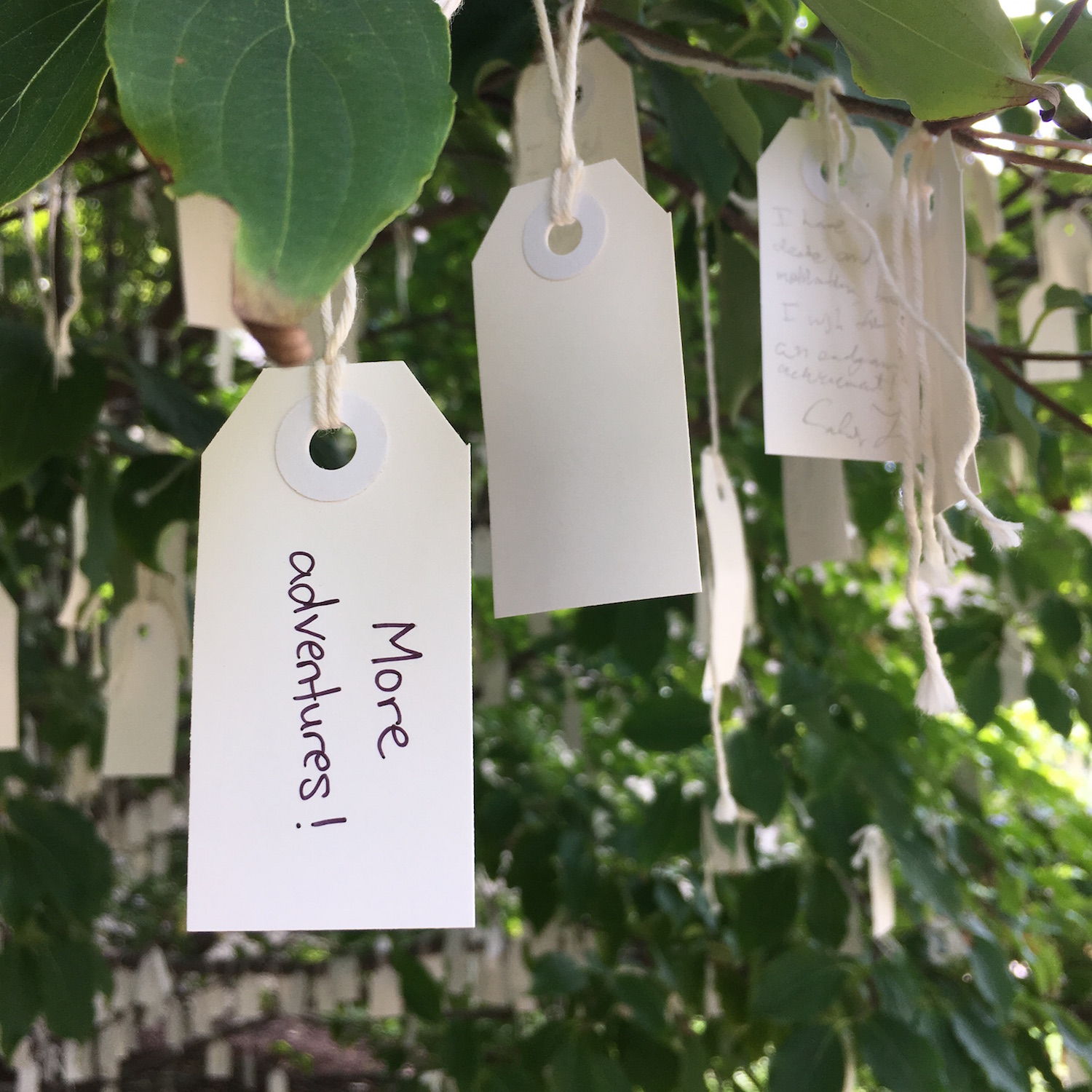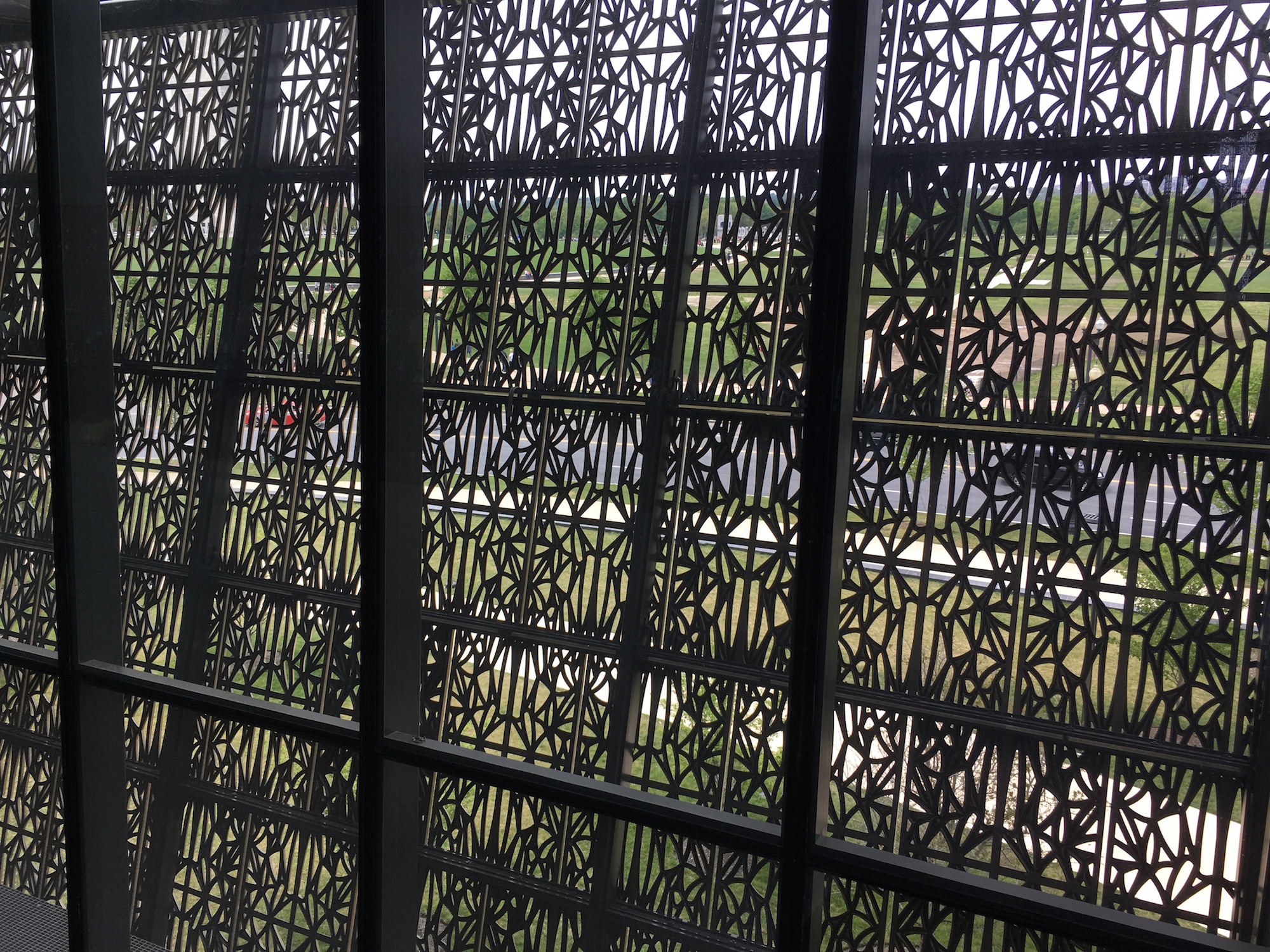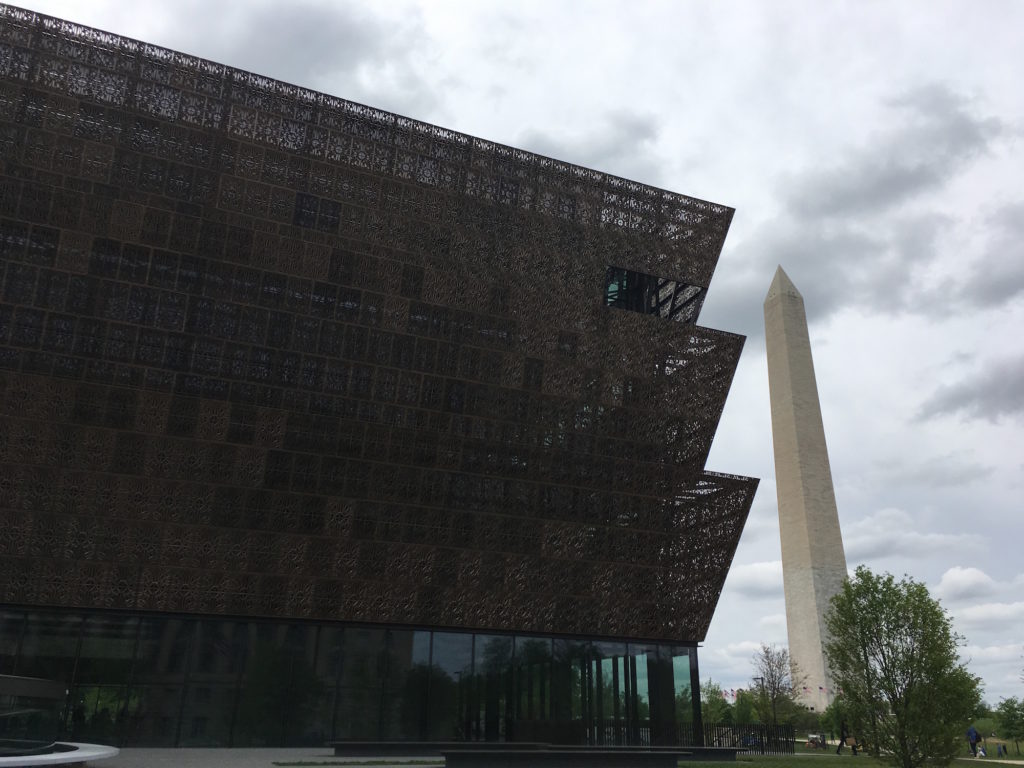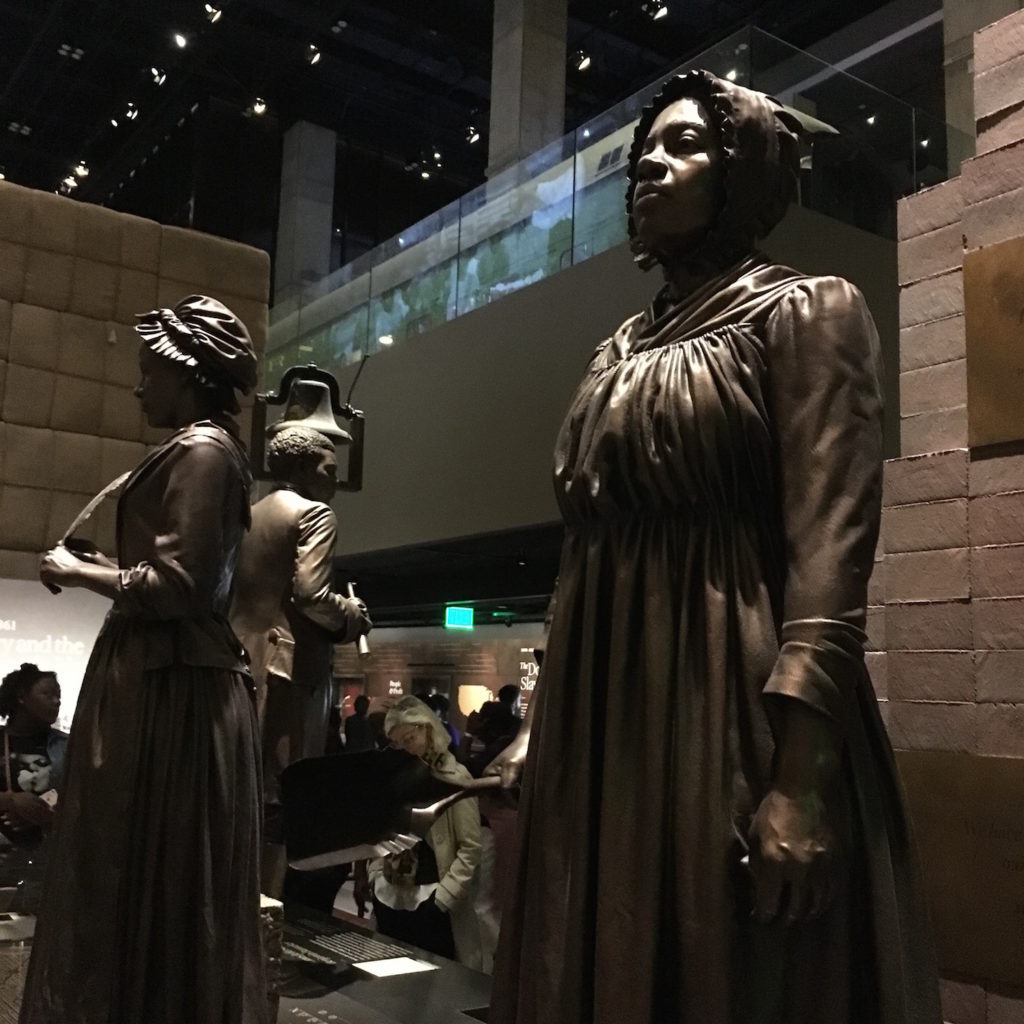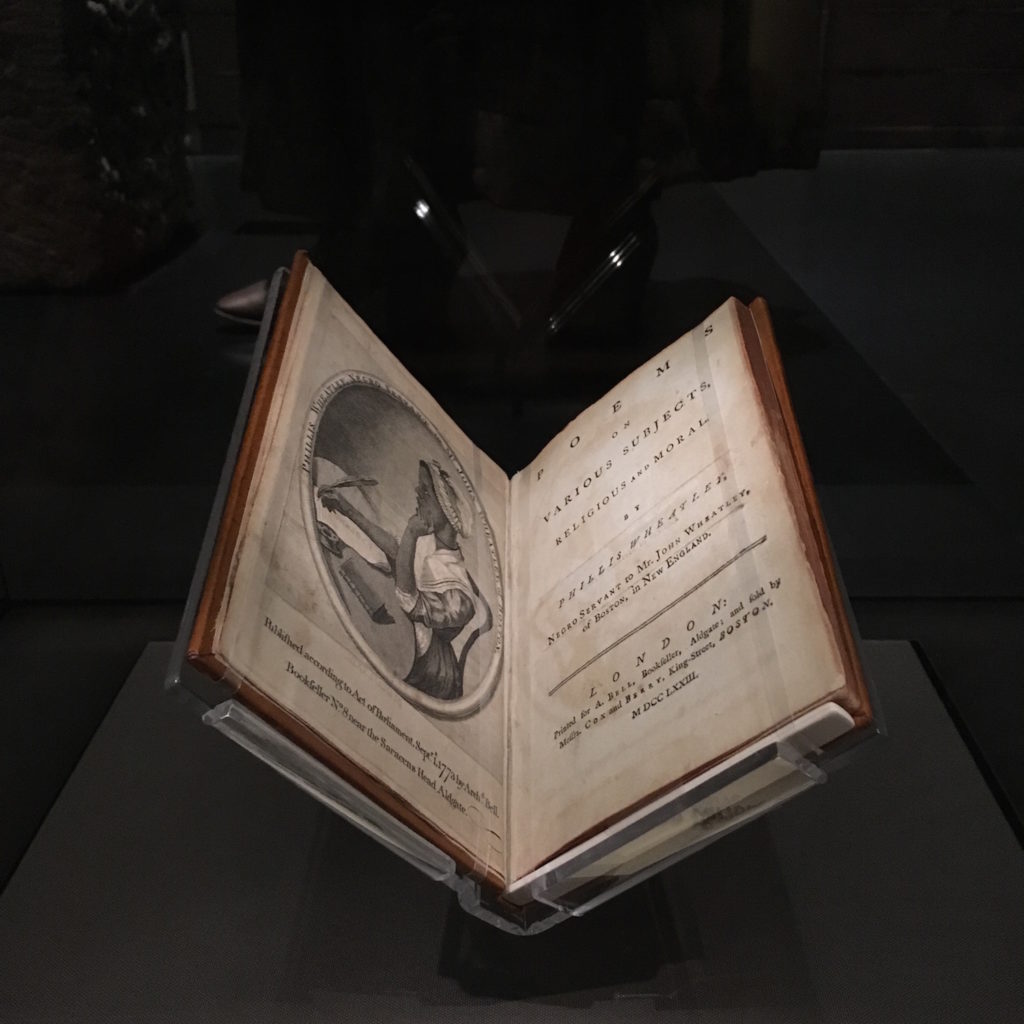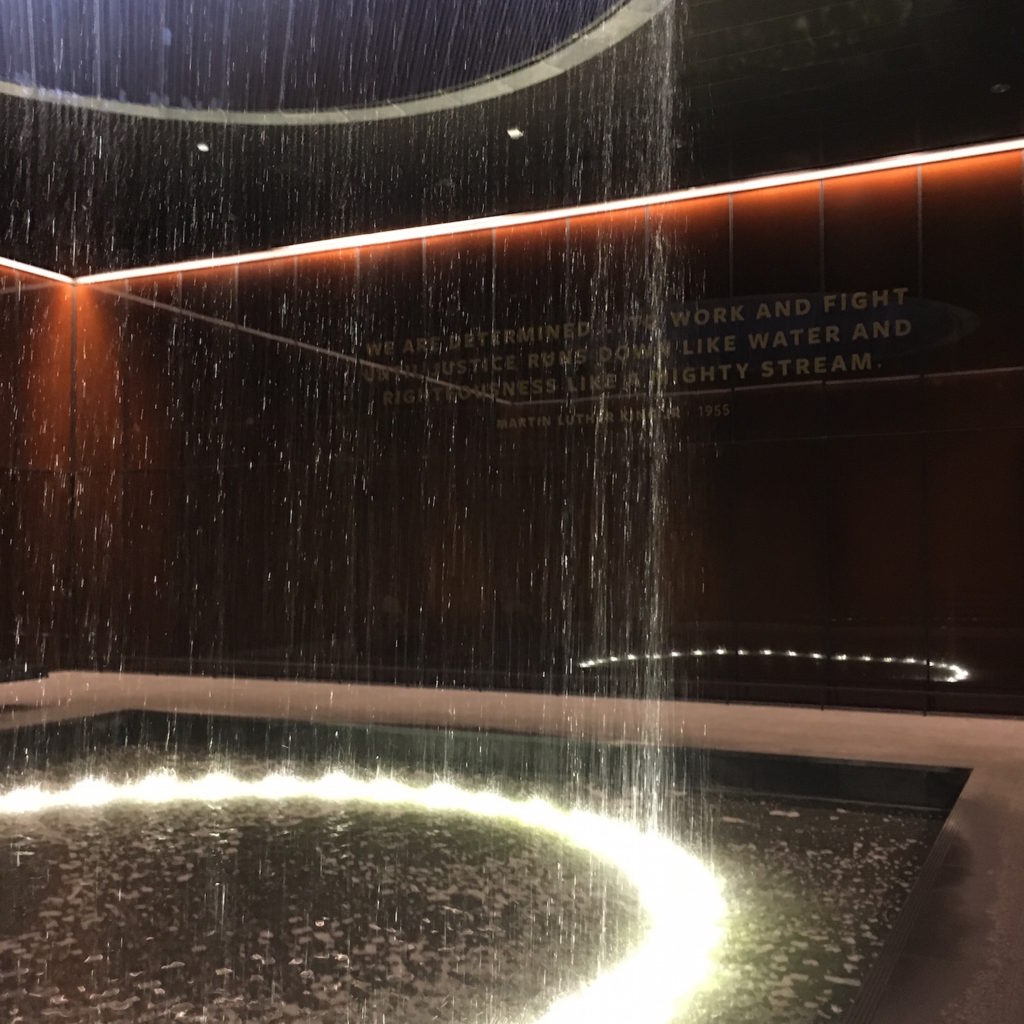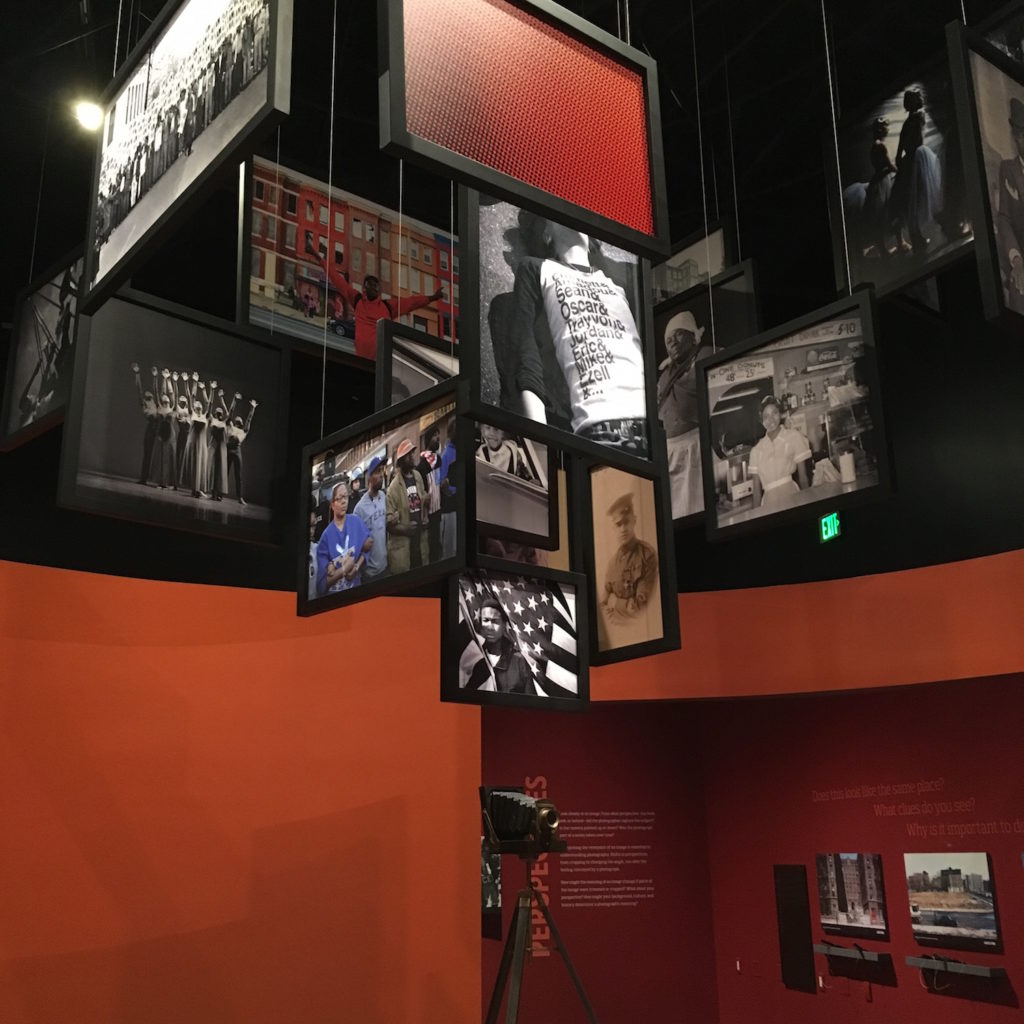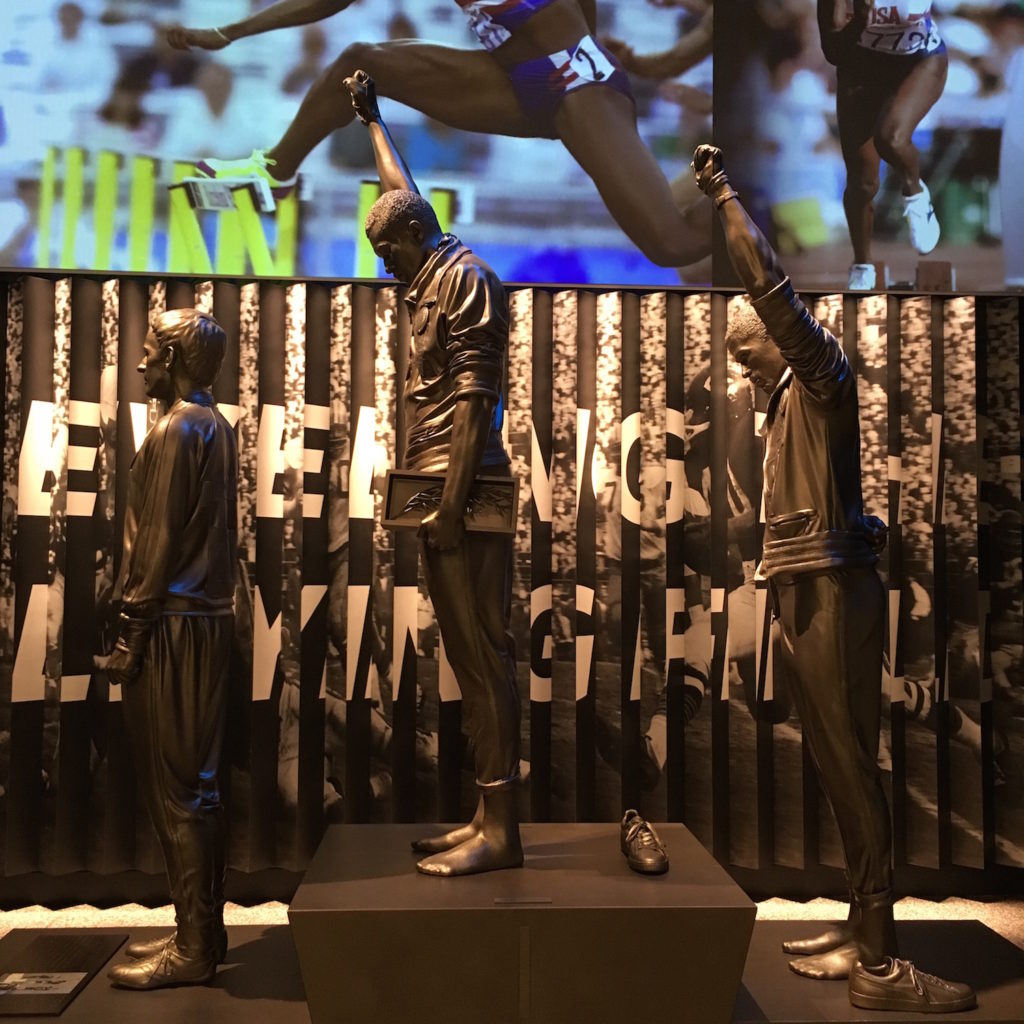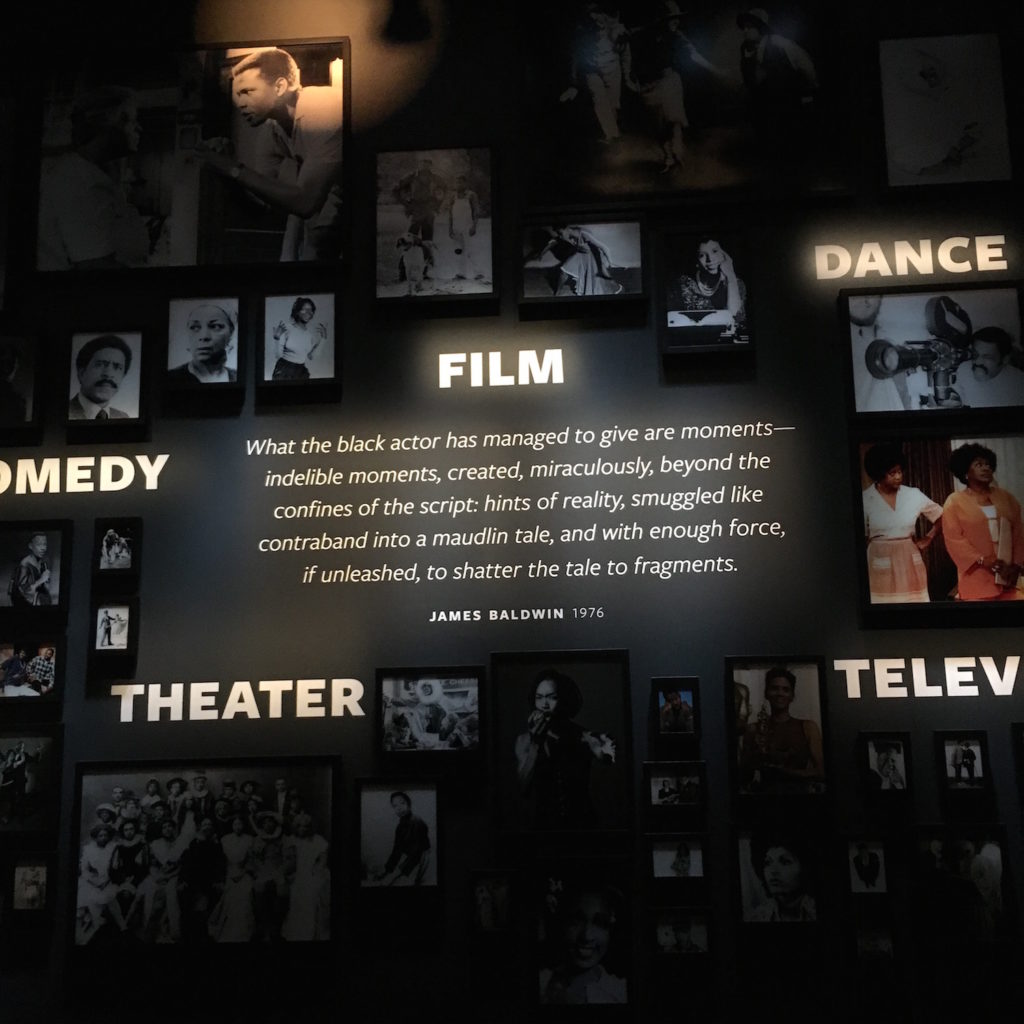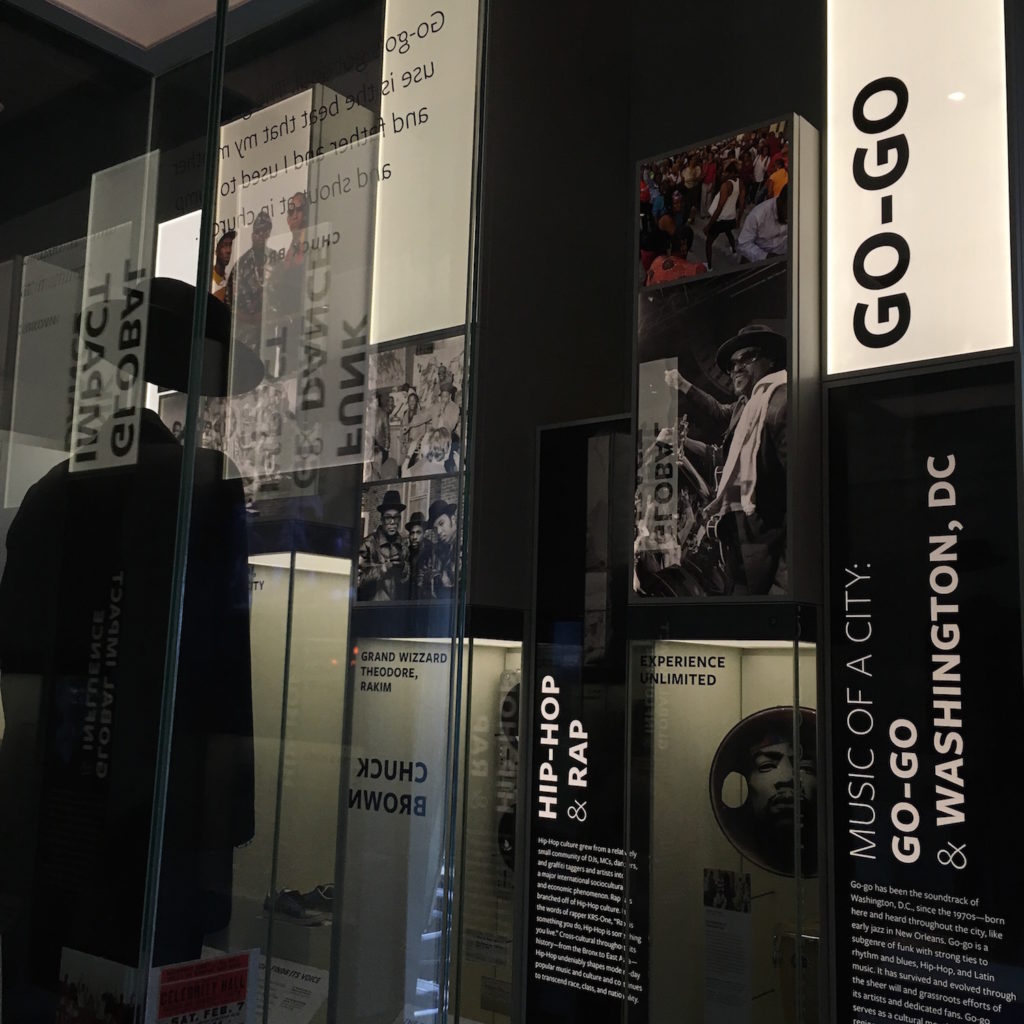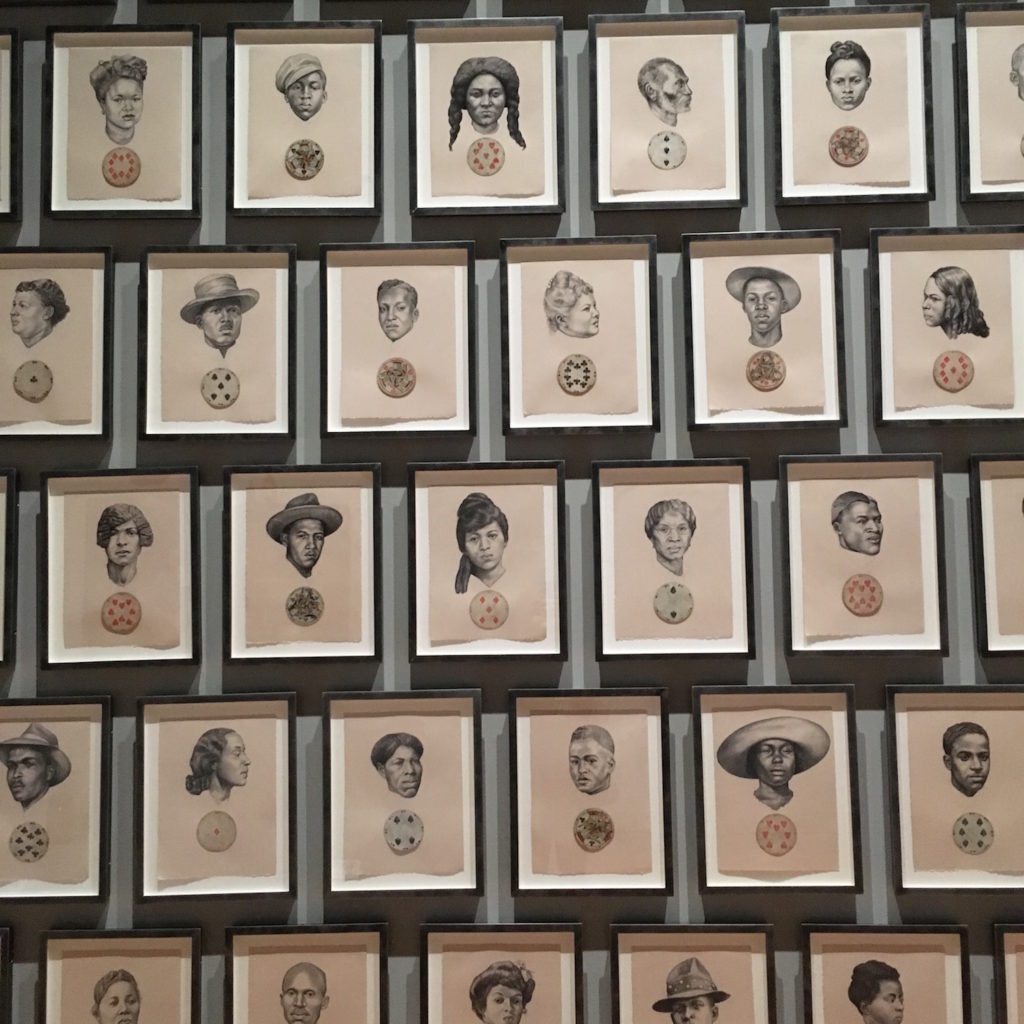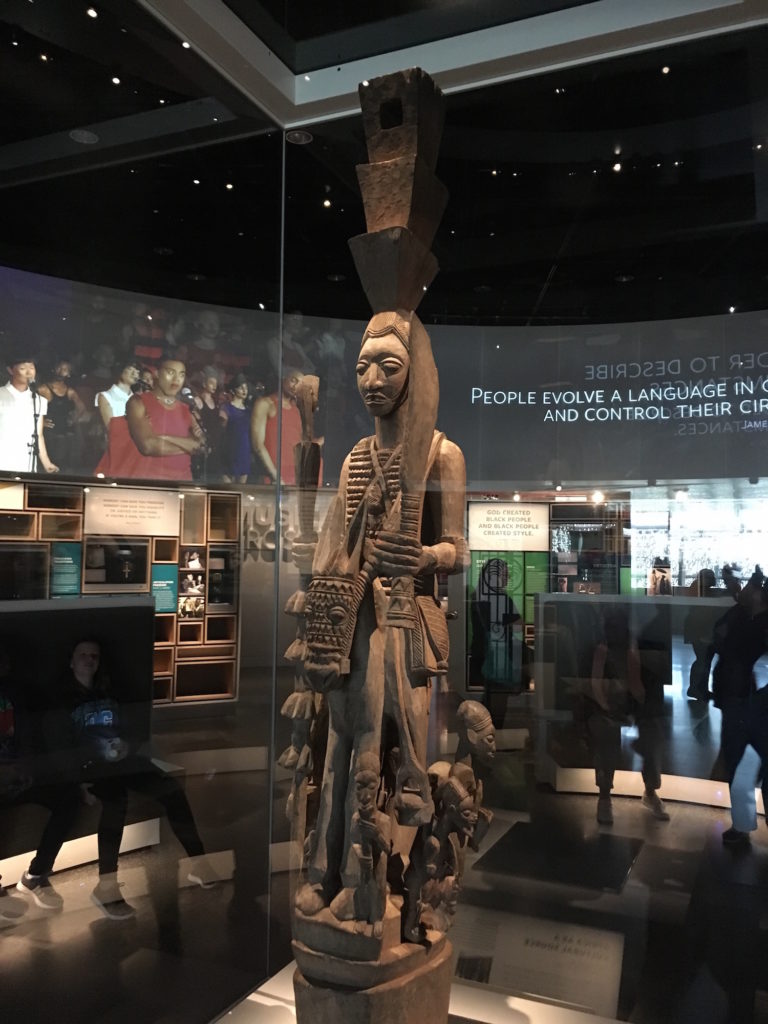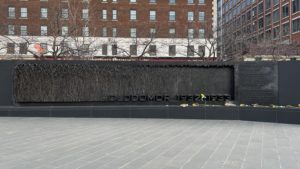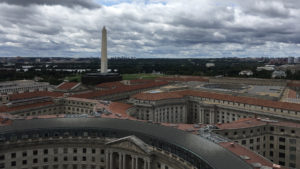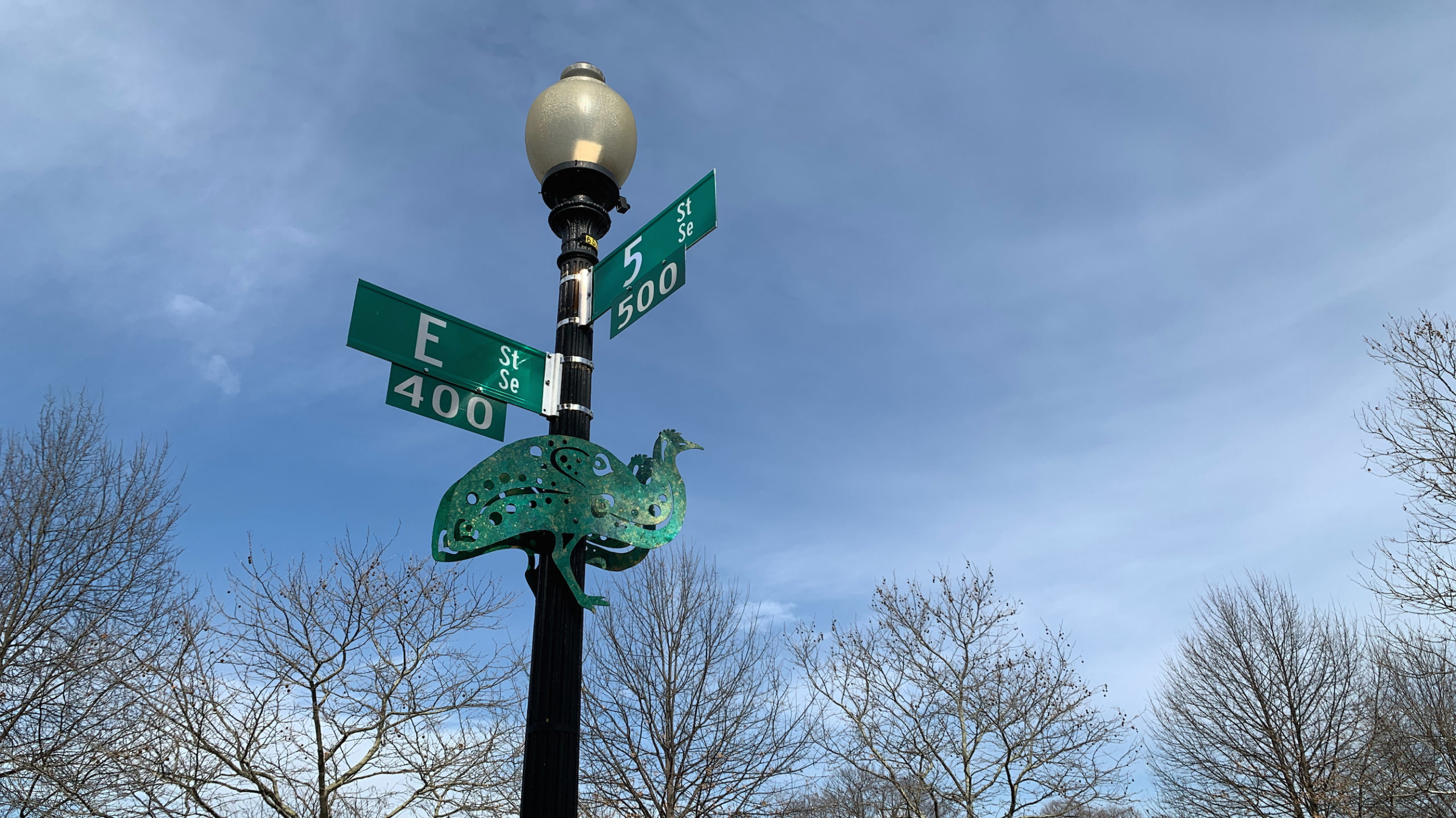National Museum of African American History and Culture
The National Museum of African American History and Culture is the Smithsonian museum focused on African American life, history, and culture
The National Museum of African American History and Culture (NMAAHC) is the newest Smithsonian museum and is quickly becoming one of the most popular, with good reason. It is a long overdue focus on the stories and legacy of African Americans on the history and culture of the United States. The museum is set up for visitors to start underground at the bottom and work their way up through the levels. As you rise through the various floors, both the subject of the exhibits and the physical space get lighter.
The line to enter the history galleries is typically longer than the culture galleries, due in part to the way the museum is designed. Visitors enter an elevator to descend to the lower levels and go back in time to the year 1400. Only about eighteen people can fit into the elevator, and visitors tend to linger in the initial Slavery and Freedom display longer than anticipated. This results in long lines as museum staff try to pace entries into the history galleries. I recommend trying to get the first timed tickets of the day (at 10:00 am) and going straight to the history galleries to avoid the line. If you aren’t able visit on a weekday when it is the least crowded, Sunday mornings are usually less busy than Saturdays.
The early exhibits in the history galleries are both sobering and inspiring. They tell the stories of the trials faced by African Americans who were forced into slavery as well as their strength and bravery to overcome these hardships. The layout of the history galleries is a bit confusing. At times it is hard to tell which direction to walk to follow the sequential path, which can lead you to miss some of the exhibits. I was disappointed not to see any mention of Carter G. Woodson, the Father of Black History, in the history galleries. However, only ten percent of the collection is currently on display, and not every story could be told with the inaugural exhibits.
Like many people I’ve talked to who have visited the museum, my own education was woefully lacking in diverse perspectives. The NMAAHC embraces its role in educating the public about the tragedy of slavery, the hope for freedom, the struggle to overcome injustice, and the many contributions African Americans have made to our country in all aspects of society. Overall, the NMAAHC impressed upon me how little I know about our own history. I also appreciated what seemed to be an intentional focus on the stories of both men and women. Phillis Wheatley, for example, was an accomplished poet despite being forced into slavery at age seven.
The history galleries fill three floors and take three to four hours to walk through. As you exit the history galleries, the Contemplative Court is designed to provide space to reflect on what you’ve seen and experienced so far. On my first visit, I walked right by without knowing it was there, but it’s worth seeking out. Take a sharp right immediately after leaving the third floor of the history section and take a few moments to sit listening to the water before heading to the upper levels.
The current special exhibit (on the Concourse level) “More Than a Picture,” is a selection of photographs from the museum’s collection. The photos are organized around four themes: empowerment, belonging, expression, and perspectives. Although all of the photos are powerful, I most enjoyed the ones showing people and events in DC.
The upper galleries of the National Museum of African American History and Culture take two to three hours to walk through. Throughout the museum the exhibits are supplemented with multimedia and interactive displays that show interviews, footage of historic events, and other ways to explore the collection. The Community Galleries on the third floor include exhibits devoted to sports, military, and community. You can explore these topics more in-depth in the three theaters found throughout the exhibit space.
The fourth level of the National Museum of African American History and Culture includes exhibits about film, theater, television, dance, music, and other arts. Visitors will learn about both the accomplishments of African Americans in these areas as well as the cultural influence of African Americans in areas like fashion, language, and food. As the final stop on your journey through the museum, these exhibits are the most fun.
You shouldn’t leave the music section without checking out the section on go-go music, which many consider to be the “soundtrack of Washington, DC.” Chuck Berry, the Godfather of Go-Go, is a local legend, and one of his suits is on display.
While it’s easy for the music, theater, and film sections to steal the show, don’t miss the visual art section to see some very interesting pieces. There are several artworks by women who are also featured at the National Museum of Women in the Arts. The visual art exhibition is small, but it includes a variety of art including sculpture, photography, paintings, and other media. The installation “The Card Series,” 54 charcoal portraits paired with a deck of cards (plus two jokers), is one of my favorites and makes a big impression.
Like many things in DC, there doesn’t seem to be agreement on the aesthetics of the National Museum of African American History and Culture. The outside is covered in a bronze-colored metal lattice that honors the ironwork designs made by slaves in Louisiana and South Carolina. The shape of the museum was inspired by the top of a sculpture by Nigerian artist Olowe of Ise. The architects feel this shape also evokes images of people with arms lifted up in praise. As you enter the Culture Galleries on the top floor, you can see the sculpture in the center of the circular display. Despite its critics, I think this building is a beautiful addition to the National Mall.
With a variety of ways to get advance, same-day, and walk-up tickets, it is starting to get easier to visit this museum. The National Museum of African American History and Culture hopes to reach the point where they are no longer necessary. Advanced tickets sell out very quickly, but adventurers have had success with same-day and walk-up tickets. One of the great things about living in DC is not feeling like you have to spend an entire day in a museum in order to see everything. As a local, you can stop by to see one or two exhibits and come back later. There is so much to see and take in at this museum, I hope adventurers will eventually be able to more easily make repeat visits in order to fully absorb all the NMAAHC has to offer. In the meantime, it is definitely worth planning ahead to get tickets to visit this museum.
Like this adventure? Subscribe to the newsletter to get updates with the latest adventures on the blog, ideas for things to do in DC, and tips for exploring the District.
Address
1400 Constitution Avenue NW
Metro Station
- Federal Triangle (OR, BL, SV)
- Smithsonian (OR, BL, SV)
Cost
Free
September – February
- Timed passes are required on Saturdays and Sundays. You can request tickets 3 months in advance on the first Wednesday of every month, or same-day timed passes are released at 6:30 am each day.
- No passes are required for Walk-up Weekdays beginning at 10:00 am on Monday through Friday.
March – August
- Timed passes are required every day of the week. You can request tickets 3 months in advance on the first Wednesday of every month, or same-day timed passes are released everyday at 6:30 am.
- No passes are required for Walk-up Weekdays beginning at 1:00 pm on Monday through Friday.
Hours
Open daily from 10:00 am to 5:30 pm
Length of Adventure
2-6 hours
